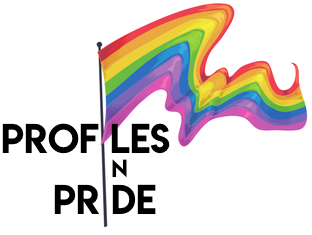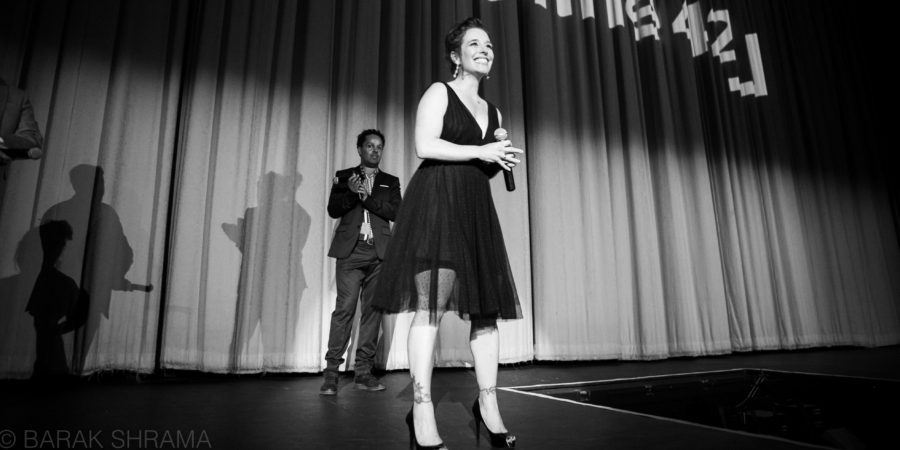Born and raised in England, Fiona Dawson immigrated to the U.S. in her early twenties when she married an American man. She started off in Houston, where she worked in the nonprofit and corporate social responsibility world.
After getting divorced a few years later, Dawson began dating women and came out as gay in 2004. She became extremely involved in the LGBTQ community in Houston and worked heavily in advocacy as an out gay woman.
Dawson moved to New York City in 2011 to pursue a career in media, and when she was asked on a date by a man, she realized the only reason she wanted to say no was because it didn’t fit with her label. After much consideration, she came out again in 2012, this time as bisexual, in a YouTube video. She now advocates for the often invisible bisexual community, aiming to raise awareness and dispel misconceptions.
She is also a huge champion of the transgender community. As part of her advocacy work, Dawson was one of the many fighting for the repeal of Don’t Ask, Don’t Tell. After its repeal, she realized that the transgender community was left behind and was still banned from serving. So Dawson decided to help tell their stories.
After collecting captivating and powerful footage, the then 37-year-old was commissioned in 2015 to create a short film on the subject for The New York Times, which went on to be nominated for an Emmy. Then, almost exactly two years ago, the ban on transgender service was lifted under the Obama administration, but Dawson felt it was still important to get these stories out there.
In partnership with Gabriel Silverman and Jamie Coughlin of SideXSide Studios, the team turned the project into a feature-length documentary film, TransMilitary, which was a brand new experience for Dawson. It’s currently on the film festival circuit (I saw it when it premiered at SXSW in Austin in March, and it moved me to tears). Following President Trump’s notorious tweets in July 2017 and subsequent attempt to reimplement a ban on transgender service, this film is more timely than ever.
This is Dawson’s story of coming to terms with her bisexuality, entering the world of filmmaking, and using her skills and passions to fight for both the bi and the transgender military communities.
Profiles in Pride: When did you first realize you were bisexual, and when did you come out?
Fiona Dawson: It was a gradual process; to answer the question, I need to go back a bit further to when I came out as gay, or lesbian. Often times I’d use the word “gay” instead of “lesbian,” simply because the term “lesbian” also associates with a strong culture, and back in 2004 when I was coming out, I didn’t feel like I fit in with the lesbian cultural identity. However, because I was a woman attracted to women, often times people would call me lesbian.
So I came out as gay in 2004, and for the next five years I only really dated or was in relationships with cis women. Also during that time, even though I was an LGBT advocate, I kind of made the assumption that I understood what it meant to be trans. Trans people were a part of our community, but I didn’t really stop and think about the difference between gender identity and sex and sexual orientation — and the intersection of the three.
By late 2011, I moved up to New York, and I left Houston as a very out lesbian who had been one of the leaders in our advocacy work. I felt like that was a really strong part of my identity. Then during 2012, I began to realize that when I was asked out on a date by a guy, the only reason I was saying no was because I’d labeled myself as a lesbian. When I took a step back and thought a bit deeper about who I know I am, I came to the realization that actually I was kind of attracted to this person who was asking me out. I wanted to go for it, but I was scared that it meant I was straight.
It’s funny that to me that bisexual didn’t seem to be my thing, I think because I carried a lot of stigma toward bi people. I remember in my early days of being out as a lesbian, I thought those similar tropes that we still see, like bi people just wouldn’t go the full way to being gay, and I was always going to be the full gay; I’m an all or nothing girl!
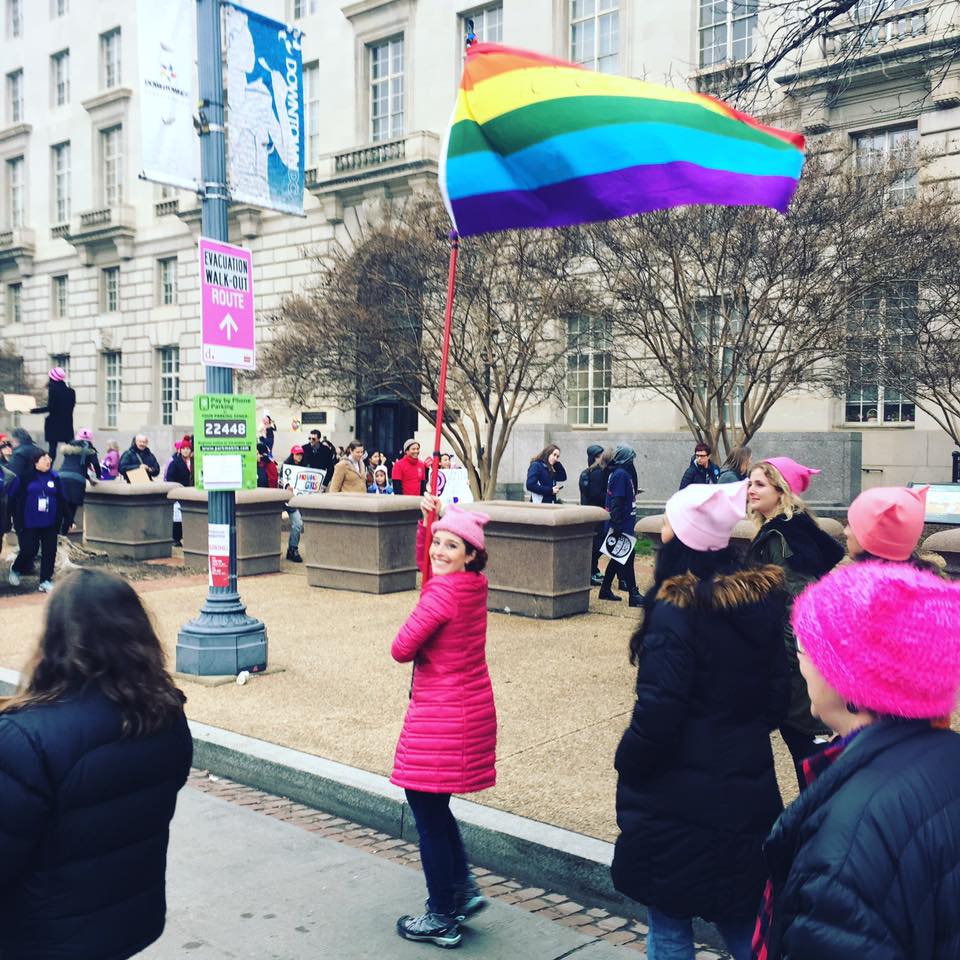
I actually went on a few dates with guys on the downlow. I was really terrified of anyone finding out that I’d been on a date with a guy, because I was scared people would turn around saying I’d been lying and I wasn’t gay all along. Because originally I was married to a man, and I came out after that, so I was worried people would say I was making it up or it was just a phase. But once I’d been out on a date with a guy and had a great time, I stopped and said, “Am I attracted to women?” The answer was yes, absolutely. My attraction to women hasn’t diminished, but I’m no longer trying to stifle my attraction to men. I’m still talking in terms of a binary at this point, too.
Later in the year, after thinking about it on and off for a good six to nine months, I thought, “Wow, I have the capacity to be attracted to someone regardless of their gender.” That forced me to then consider the trans community.
That’s one of the reasons why I think bi people have a lot in common and an automatic connection with trans people. Because bi people are looking at a gender in a different way and trans people are understanding gender in a different way, so we kind of have that camaraderie and solidarity.
In the fall of 2012, I came out as bi in a YouTube video because I felt that I had a lot of people I wanted to communicate my message to, and because I had done a lot of advocacy work in Houston, I wanted to justify my bisexuality. So in that video I say that I realize I have the capacity to be attracted to someone regardless of their gender — men, women, and people in between. I contacted a few close friends first before I told a wider group of people because I wanted to make sure I had some close friends who had my back first. They were all extremely supportive. In fact, a couple people said that they identify as bi too. I had no idea, because they were seen as gay as well.
PIP: Yes, it’s so easy for us bi folks to be invisible. What do you think of the perspective that the word “bisexual” can feel too binary? It seems like a lot of people who are attracted to people beyond cis men and cis women now prefer to call themselves pansexual or queer.
FD: For me, bisexual is not a binary term. Bisexual leaders like Robyn Ochs agree that bisexual means the same as or different from. That means I have the capacity to be attracted to someone sexually and/or romantically who has the same gender identity as me or a different gender identity as me. For me, that opens up the whole spectrum.
I imagine there’s probably zero or maybe some tiny difference between “bisexual” and “pansexual.” My understanding is that pansexual people are attracted to people regardless of gender or sex, and I feel the same way. The reason why I stuck with bisexual is because I want to be a bi advocate, and I want to represent the letter B in our acronym LGBTQ. For me, bisexual does represent the whole spectrum of gender and/or sex.
PIP: Wow, I love that perspective. So how did you get into the world of filmmaking?
FD: In 2010, I left my job in corporate social responsibility to redirect my career into media production. My ambition when I started out was actually to host and present. I enjoy being on camera and I love interviewing other people and helping expose people’s stories. I want to be able to build a platform for others and inspire others to do their own social movement work.
I started that in 2010, so it was nearly eight years ago, but I kind of morphed into documentary filmmaking. That wasn’t my original intent when I changed my career, so I did this short film with The New York Times and then we made it a feature documentary, which I co-directed with my partners Gabe Silverman and Jamie Coughlin.
PIP: What other kinds of work do you do?
FD: I’m a soft skills trainer, so I facilitate team-building events, teach Creating a Team Culture workshops, and do presentation skills classes. It’s similar to the work I want to do on camera. Now that the film has come out, and I’ve got more time, I’m trying to pivot to do more of what I want to do.
The project I started eight years ago is called “NOW with Fiona.” It’s about the positive ways people are working to end stigma and discrimination against anyone, anywhere in the world. Instead of looking at the negative side of things, I want to look at the positive ways people are making the world a better place. The last couple of months I’ve been throwing out different ideas of what to do with my career. But honestly, this is what I want to do. There’s nothing else I want to do. Now I’m hoping that I’m in a better position to be able to get it out there.
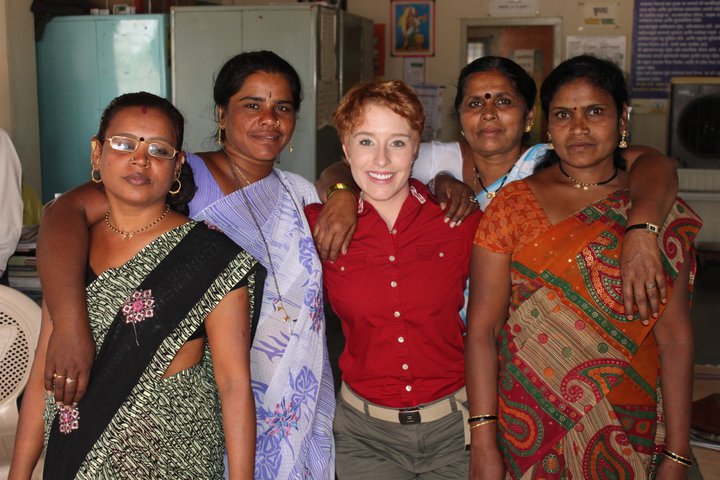
PIP: Absolutely! So to rewind, what led you to create the short film about transgender military service that was on The New York Times?
FD: I started the TransMilitary project in October 2012, which is ironically around the time I came out as bisexual. I’d been an LGBTQ advocate for around eight years, and one of the main advocacy points had been around the repeal of Don’t Ask, Don’t Tell (DADT). So I had given a lot of speaking engagements, fundraising, and advocacy work saying that LGBT+ people should have the right to serve. We said “lesbian, gay, bisexual, and transgender,” — we said “LGBT.” I didn’t realize at that time that transgender people would still be banned after the repeal of DADT. I didn’t realize there was policy that would still prohibit their service.
Roughly a year after DADT was repealed, I came to realize that trans people were still banned. At the same time, I wanted to make a new media project, so the timing just fell into the place. I had this kind of handshake agreement with friends Allyson Robinson, Sue Fulton, and Brynn Tannehill, where they’d be working on the advocacy with the servicemembers and they’d be driving the organization to bring troops together, and I’d have the opportunity to share their stories.
In 2013 and 2014, we had a few short videos on some LGBTQ platforms. Then in 2014, there was a journalist who worked The Washington Post and interviewed one of our main subjects. His story was on the front page of the Post. I stayed in touch with the journalist, and rolling into early 2015, he was now working at The New York Times. They wanted to distribute their Transgender American series, and the guy who knew I’d been working on TransMilitary for a couple of years asked me if they could commission the short film.
So they teamed me up with Gabe Silverman and Jamie Coughlin of SideXSide Studios, and the three of us together made the short film, Transgender, at War and in Love.
That came out June 4, and I always remember that date, because it was meant to come out June 1, a Monday. It got pushed back and we were disappointed at the time. But later we were celebrating, because it ended up June 1 was the day Caitlyn Jenner came out on the cover of Vanity Fair. Our story would have been buried.
Instead, her story elevated the appetite for more content, and we were ready to go, so our film came out three days later. I think it really helped to be a part of creating that groundswell and that movement for trans visibility. That short film ended up being one of the most viewed on The New York Times, and it was Emmy nominated. We could see it was so successful, and we also knew there was so much to the story that had not been told. We knew that our service members were going in and out of the Pentagon; we knew that we had to continue and make this into feature length.
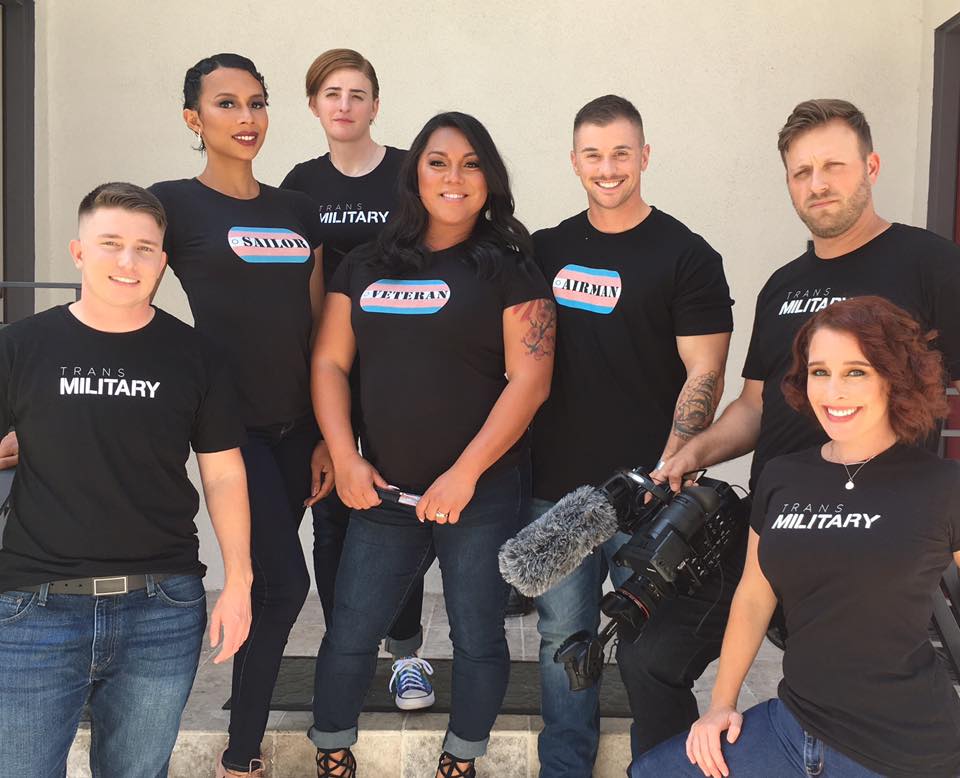
PIP: Was making a full-length film a totally new experience for you?
FD: Absolutely, none of us had ever made a feature documentary before, so this was our first. I think we’ve always been lucky; even when it doesn’t feel like it, I feel like luck has come through for us. One thing that significantly helped us was being accepted by the IFP Documentary Film Lab.
That film lab is a year-long mentorship program where we went to New York three times that year, and they provided us with training, resources, and support. We did Film Week, where we got to pitch to potential funders and distributors of film festivals, and they taught us how to work on our narrative, how to work on our synopsis, and how to develop all the tools you need to get the film to market. Without that film lab, I can’t imagine that we would have ended up premiering at SXSW the way we did.
We started that lab May of 2017, and then of course in July of 2017, President Trump tweeted that he wanted to put the ban in place again. This ironically helped our storytelling, because people automatically understood the issue. Before, for years, people didn’t even realize this was a thing — they didn’t know that trans people were still banned, and they didn’t understand why they could or could not serve. A vast majority of people assumed that they were serving and didn’t realize the ban was there in the first place. It really helped to create an opening for people who have the power to put the film on a massive platform and realize this is something the audience wants to see.
PIP: What kind of an impact do you think the film has made?
FD: It’s a hard question to answer when it’s your own baby. I know it’s impacted at least one person, because after our third screening at SXSW, I was taking questions and staying behind and talking to people. At the end, someone came up and came out as trans, and they admitted they just recently retired, and I think it was only a matter of weeks if not months they’d come to know they were transgender. They very emotionally thanked us for this film because they felt it would help educate people around them with their transition. Knowing it’s affected just that one person means we accomplished our goal.
I’d say that of the reviews out of SXSW, one of my favorite quotes is from a journalist who wrote that “this is the film to show your anti-LGBT uncle this Thanksgiving.” I hold that near and dear to my heart, because I want this film to be readily accessible for any LGBTQ person or ally, to show people who need just a little exposure in order to change their hearts and minds. Studies show that film and storytelling does affect hearts and minds, and those hearts and minds can then affect how things go at the ballot box. If we can help bridge that gap between people’s understanding of trans people, I think we’ve accomplished our goal.
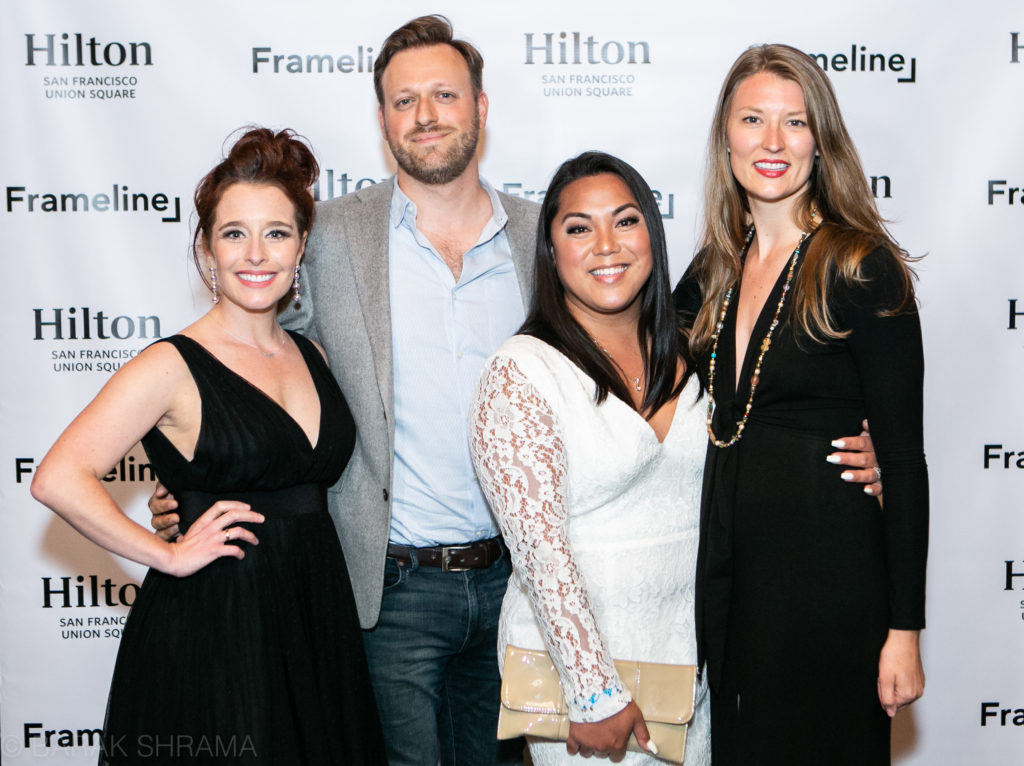
PIP: How can people see the film?
FD: Right now, we’re in the stage of screening at film festivals. On our website and social media pages, we’re advertising dates and cities. On June 14, we played at the Castro Theater in San Francisco at Frameline. Then we went to Washington, DC on June 17 for the AFI DOCS Film Festival and we also screened at the Human Rights Watch film festival in NYC on June 19 and 20. We will be in Los Angeles at Outfest on July 14, and we have other film festivals coming up, which haven’t yet been publicly announced.
We’re also working very hard to secure distribution. My intent is that you’ll be able to watch this film on a major online distributor of streaming video. Hopefully we’ll have a bit of a theatrical run, and maybe there will be a TV broadcast. We have agents working on all of that.
PIP: Great, I can’t wait for more people to see it. What have you learned from this project and the trans community?
FD: There are so many things, I don’t know where to start. I don’t want to give the answer injustice. I want to answer from a personal and a professional standpoint.
Personally, I think on any project when you’re working with other people, you have the opportunity to gain a greater understanding of who you know yourself to be and how you want people in the world to see you and develop your own self-awareness and awareness of others. I think being a part of advocating for trans rights has brought me as an individual a much finer, greater clarification on the difference between sex and gender, as well as an understanding of the relationship between your body and mind.
One of my life goals is getting people to understand that sex is between your legs and gender is between your ears, and there’s no right or wrong combination of those. And furthermore, gender is three things: who you know yourself to be, how you present yourself to the world, and how the world sees you. And all of that is very personal. You have to tap into your soul in some ways. Just coming to understand the glorious combination of who we are as human beings is so important.
That conversation itself is big and deep, and that doesn’t even bring into play sexual orientation and who you’re attracted to. I’ve really grown in my own self awareness of who I am in the world by coming to know other people so intimately and so deeply.
From a filmmaking and more professional perspective, I’ve never been part of a project where people have been so committed and so bonded for one cause or one mission. I’ve never served in the military — I can’t imagine I ever will — but I have the deepest respect for how people are able to put aside their own priorities and truly put a mission first. So being a part of the mission to end the ban on trans service was the experience of a lifetime. I’m actually now suffering a feeling of loss. We’re still family and friends, and we still connect, but we no longer have to communicate on a daily basis. But then of course the mission is no longer completely over; it’s just pivoted in a different way because of the current administration.
Thirdly, from a filmmaking experience, I think this project has validated my gut instinct to really get to know people if you want to share their story. As my career grows, whether I make another documentary or whether I develop my online TV series, I never want to be somebody who just swoops in and gets the surface of the story and disappears. I want to have a genuine human connection with the people whose stories I’m telling. I got so close to my characters, or service members in this project, and I hope that’s how I treat every project moving forward.
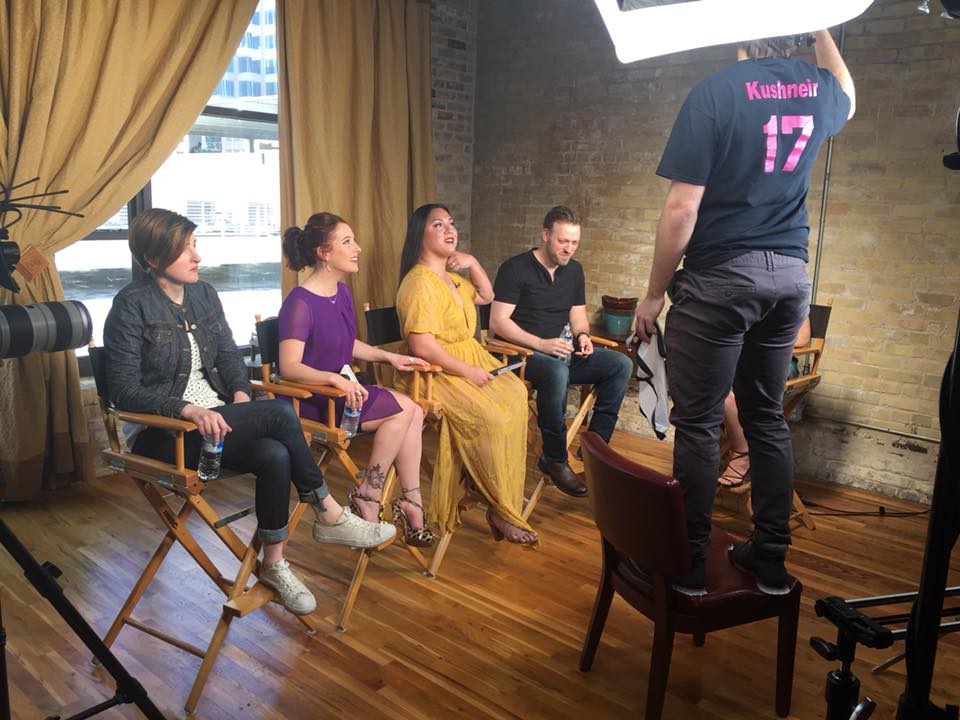
PIP: Definitely; we are all about deep, personal storytelling here! What other types of advocacy work do you plan to do moving forward?
FD: Before the film took over my entire life, I was a volunteer and sat on the board of directors for the Human Rights Campaign. I’ve supported other organizations in the ways that I can, but for the most part, I pivoted all of my attention onto TransMilitary, so my capacity to do more has been pretty low for several years now.
Now that TransMilitary is coming out and my time on that project is decreasing, I’m looking to go back to expanding the different ways I can advocate. I think as a bisexual individual, opportunities like this, to be able to share my story with you, are important. We can all be an advocate by living as our authentic selves and having the courage to share our authenticity with others.
Learn more about Fiona at FionaDawson.com, and keep up with her on Instagram @fionajdawson.
